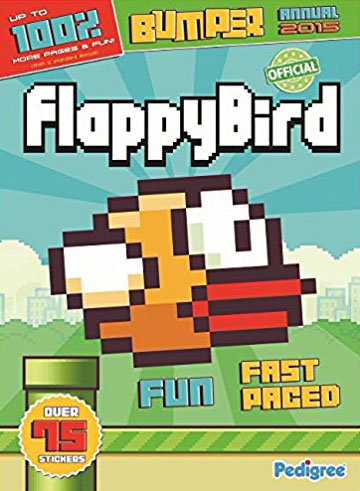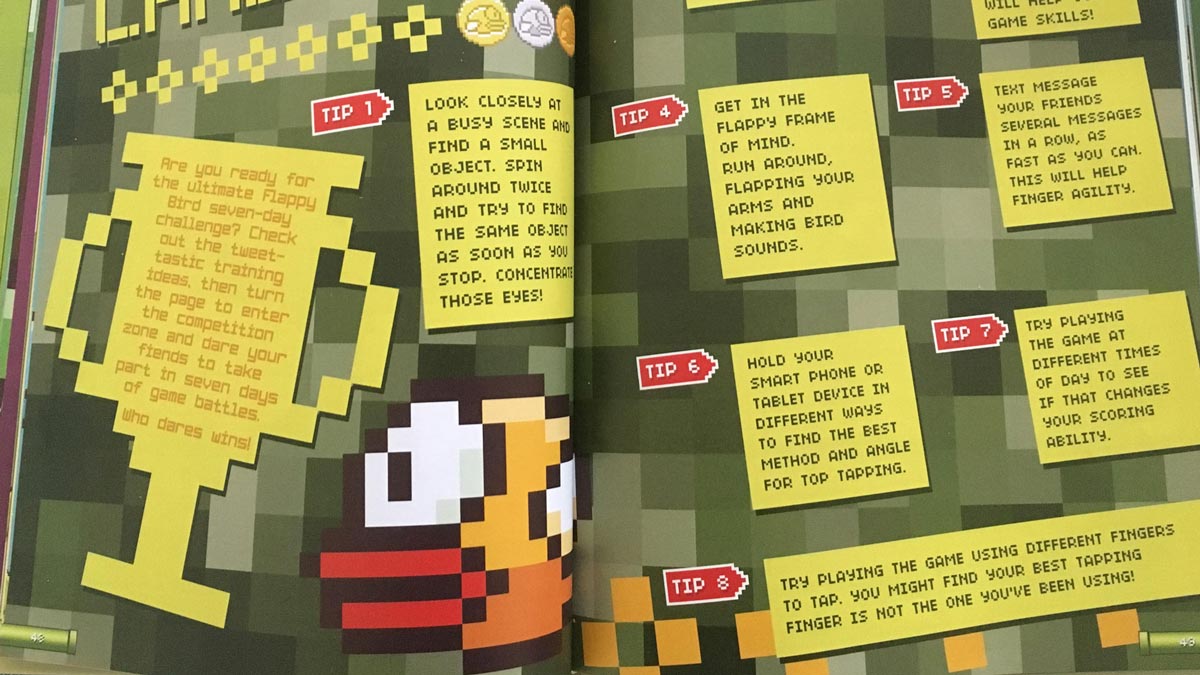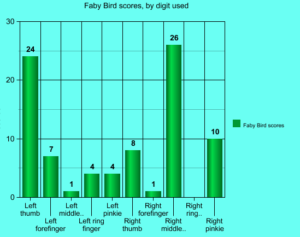
There’s an official book about Flappy Bird, for some reason
This is one of a few pieces on this site rescued from the digital scrapheap, originally published for a site that’s no longer online. I’ll begrudgingly remove if any shadowy publishing types compel me to relinquish what’s rightfully theirs, despite having unceremoniously binned it themselves, but come on. That’d just be silly.
It’s presented as is, so you’ll have to forgive any outdated references or generally shoddy writing.
–
“Developer Behind ‘Flappy Bird,’ The Impossible Game Blowing Up The App Store, Says He Just Got Lucky.” – Techcrunch
“Flappy Bird at risk of extinction as developer ‘cannot take this anymore’.” – The Guardian
“iPhone with ‘Flappy Bird’ app hits nearly $100K before eBay shuts it down.” – Market Watch
Christ, what was all that about? It’s now been several years since the unprecedented rise of Flappy Bird, a mobile game from Vietnamese developer Dong Nguyen that briefly took over the world, and it’s still hard to believe that it actually happened.

It’s hard to believe that this incredibly simple game, developed by one man over three days and featuring recycled artwork, began to rack up 2-3 million downloads every day. It’s hard to believe that this unassuming developer faced so much abuse that he withdrew his greatest success from the App Store, sacrificing $50,000 a day in ad revenue. It’s hard to believe that, rather than disappearing as quickly as it arrived, the cult of Flappy Bird lived on to the extent that iPhones with the game installed became a precious commodity.
So, Flappy Bird. In this game, you tap to make the bird flap its wings. The bird is just a bird, round and bug-eyed and made of pixels, and it dies if it touches green pipes. These green pipes were deemed to bear a dubious similarity to those featured in Super Mario Bros., which was important in 2014 apparently. Beyond that, it’s extremely difficult to say anything about Flappy Bird.
This is why, when I saw that a British publisher had released a Flappy Bird annual, I had to read it – just to see how they’d filled the pages. Annuals, for those who may not know, are large, hardback volumes aimed primarily at children and released for the Christmas market. They’re a staple in the UK, and a quick Amazon search for ‘annual 2018’ throws up recent examples based around Star Wars, Minecraft, and the Dreamworks movie Trolls.
Annual publishers aren’t particularly picky what they feature – basically ‘anything we think might be popular with kids’ seems to be the main criterion – and the content itself is usually a fairly bland mix of comic strips, artwork, stories, and themed activities. But even so, turning to Flappy Bird was a remarkable move.
It’s not hard to see how it happened. Angry Birds, Cut the Rope, and Temple Run already had their own annuals, and to the untrained eye Flappy Bird may not have seemed so different. But these other games, Angry Birds and Cut the Rope in particular, feature characters with their own personalities and motivations. They even have coherent worlds, fleshed out by spin-offs in other media. By contrast, the Flappy Bird Bumper Annual 2015 simply exposes the emptiness of the source material.

It’s a 128-page exercise in barrel-scraping, with the writers’ utter desperation for ideas even tangentially related to Flappy Bird palpable on every page. The book contains more than 75 stickers, providing all-important padding for at least a couple of pages, but even then: what is there that’s sticker-worthy in Flappy Bird? After fifty of protagonist Faby (some in different colours, because why not?), some pipes, gold medals, and ‘Get Ready!’/’Game Over’ messages, it resorts to generic zaps, splats, whooshes, and kapows that neither aurally nor visually feature in the game. They made stickers of pretty much everything in the entirety of Flappy Bird, and still it wasn’t enough.
Stock material is leaned upon heavily, with generic maze puzzles, word searches, and spot-the-differences all given the lightest of Flappy Bird makeovers. Elsewhere, the writers seem to have laboured under the misapprehension that Flappy Bird fans must also be into all things avian, presumably stumbling upon the game by endlessly searching the word ‘bird’ in the App Store. One activity challenges readers to “keep a pixel eye out for all the different kinds of birds in your area,” while another consists of a series of true-or-false questions about our feathered friends.
But writing about the actual game can’t be avoided forever, and it’s when providing Flappy Bird tips that the book is at its most laughably futile. I hadn’t realized that there could be pro strats for such a simple game, but I decided to give myself over to the wisdom of the Flappy Bird Bumper Annual 2015.

Since the real deal was removed from the App Store last year – seemingly for good, this time – I was forced to apply the book’s teachings to a clone called Faby Bird. Those tips had me drumming Morse code on my desk “to build up tapping stamina and tapping range,” taking photos of birds out my window (“The precision needed to get a good photo will help your game skills!”), and holding my phone at some frankly impractical angles.

Shockingly, none of these sparked a noticeable improvement in my scores. I needed to take things up a notch, but of course the book had this covered. I took the radical step of “playing the game at different times of day” and noting which yielded the highest scores. I played a few rounds “using different fingers to tap,” and the data (seen on the left) shows that the middle finger of the right hand is objectively The Most Powerful Gaming Digit.
I even followed the instructions to cut out and make a Faby mask, donning it in preparation for the most physical training exercise yet: running around flapping my arms while squawking like a bird, to “get in the Flappy frame of mind.” And by jove, when I gathered my breath and had another go, I made it two pipes further than previously. You do the math.
The Flappy Bird annual is an odd piece of cultural detritus, then; an artefact that should probably have never been. But it’s also rather quaint, a reminder of that old promise about mobile gaming: that it would ‘democratize’ games, putting small teams and lone creators on an equal footing with massive corporations. This dream is now long dead, of course, but Flappy Bird briefly lived it. It was made by one man in three days, and somehow reached a level of fame for which it was fundamentally ill-equipped. Shameless cash-in or not, nothing tells that story better than this annual.
